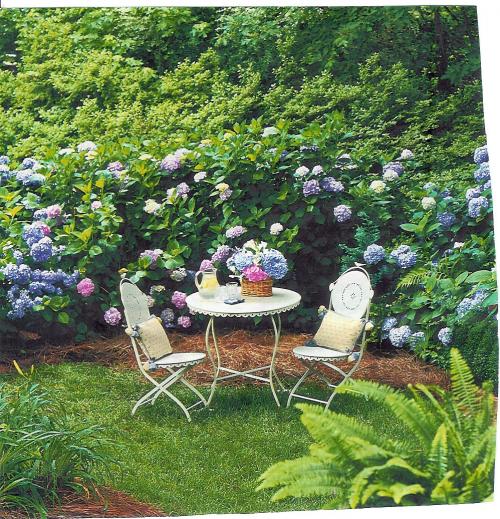How to Easily Grow Beautiful Hydrangea Flowers
On the hottest days of summer think about staying cool in your beautiful garden filled with a fluffy hedge of hydrangeas in your backyard.
The hydrangea is an old-fashioned plant and very easy to care for. A bold statement is made with their showy, billow b ossoms as well as the vibrant colors.
Hydrangea is a low maintenance plant. Gain knowledge about the hydrangea plant bush or tree by reading available material from your library, local bookstore or from free access on the Internet. Contact the American Hydrangea Society", or look for the garden groups or clubs in your area. Talk to other gardeners. Rely on yourself to gain experience through trial and error.
Success begins with paying attention to the soil, mulch and moisture. To start ahead of time, add some type of organic matter to the soil. In the winter around January, dress the bed with some type of homemade compost, cow or horse manure. In the summer mulch with pine straw to help the soil retain moisture that the heavy drinkers crave.
Even though hydrangea plants are known to be a shade plant, they still require several hours of sunlight each day. They truly like the morning light but should be shaded from the afternoon hot so the blossoms won't scorch. Even in the shade, extreme heat can cause the flowers to wilt. But they bounce back after sundown.
Getting the favored color in this plants flower can be a little tricky. Acidic soil will typically yield blue hydrangea blossoms, while alkaline soil will yield pink plant flowers. To make a more blue, mix aluminum sulfate with the 10-10-10 fertilizer around April and July.
Flower heads of macrophylla hydrangeas are classed as mopheads, with densely packed clusters of colorful florets or lacecaps which have flattened heads, edged with a sprinkling of florets. To when it comes time to prune these beauties in the late winter, prune the macrophyllas taking care not to remove their flower buds, which are set on the previous season's growth. Start at the top of each branch and clip above the uppermost pair of green buds. If a branch shows no green or if it snapped easily, then cut it to the ground and assume it is dead. Hydrangea macrophylla blooms prefer Zone 7 and warmer, they can survive in colder whether but fail to bloom.
Other species of the hydrangea flower on new growth making them a better choice than macrophylla for colder climates. These later flowering shrubs include Hydrangea 'Annabelle' and Hydrangea paniculata 'Tardiva'. Because they bloom on the current seasons stems. They can be cut back drastically in late winter.
To complement the hydrangea shrub, plant with low growing perennials such as hosta, ferns and epimediums. They will stick out from under the hydrangeas and give the garden more dimension.




